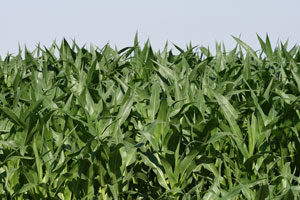Steer and heifer calves sold $5 to $10 per hundredweight lower for the month with fleshy or unweaned offerings additionally discounted. One exception may be noted for pee-wee lightweights weighing under 400 pounds, which were only marginally lower as buyers are demanding these types in order to keep their price per head down and keep their options open as most still expect tight supplies and a good market after the first of the year. Price spreads are widening on 500 to 700 pound calves as backgrounders become more particular as to kind, quality, and most importantly whether or not they have been weaned and/or had their respiratory vaccinations. Hot days and cool nights make for good sleeping weather, but they can be a nightmare for those trying to straighten-out new calf purchases that have incurred undue stress from shipping and a strange environment (not to mention missing their mothers). Additional calf buying interest was seen from Southern Plains winter wheat grazers, but not nearly enough to offset the increase in supplies as sellers scrambled to market calves before the lofty prices (left over from spring highs) totally eroded.
Yearling feeder prices actually peaked during the last full week of August when the fed cattle market jumped $5 to $7 per/cw. But, September saw feedlot replacements lose $4 to $7 in value with pressure from higher feedcosts and increased numbers. Weakness has prevailed, despite dwindling supplies of true yearlings as available offerings are overwhelmingly becoming calves. Vacant feedlot pen-space has been filled with deliveries of previously contracted country and video sales as 2.27 million head were placed on feed during August, a full 8 percent more than industry analysts had predicted. It’s not that we don’t have the feedyard infrastructure for today’s light numbers of feeder cattle, it’s just that most of the empty pens are in feedlots that are grown up in weeds with padlocks on the front gate. Yearlings are expected to hold their ground better than calves as their feed conversion rates are much better and health problems are usually minimal. But, the sheer numbers of calves hitting the market during the fall-run (some of them weighing well over 700 pounds) will most certainly weigh on the yearling prices.
The fed cattle market made it through September relatively unscathed compared to calves and yearlings. Direct slaughter cattle sales were mostly steady through the month, with prices wavering just under the resistant point of 100. Corn concerns are a thing of the past for showlist cattle and market-ready supplies are extremely tight. Export demand remains much improved over recent years and dressed beef values are respectable for this time of year. ![]()
Corbitt Wall is officer-in-charge and the Missouri federal-state supervisor at the USDA-Missouri Livestock and Grain Market News Service.









